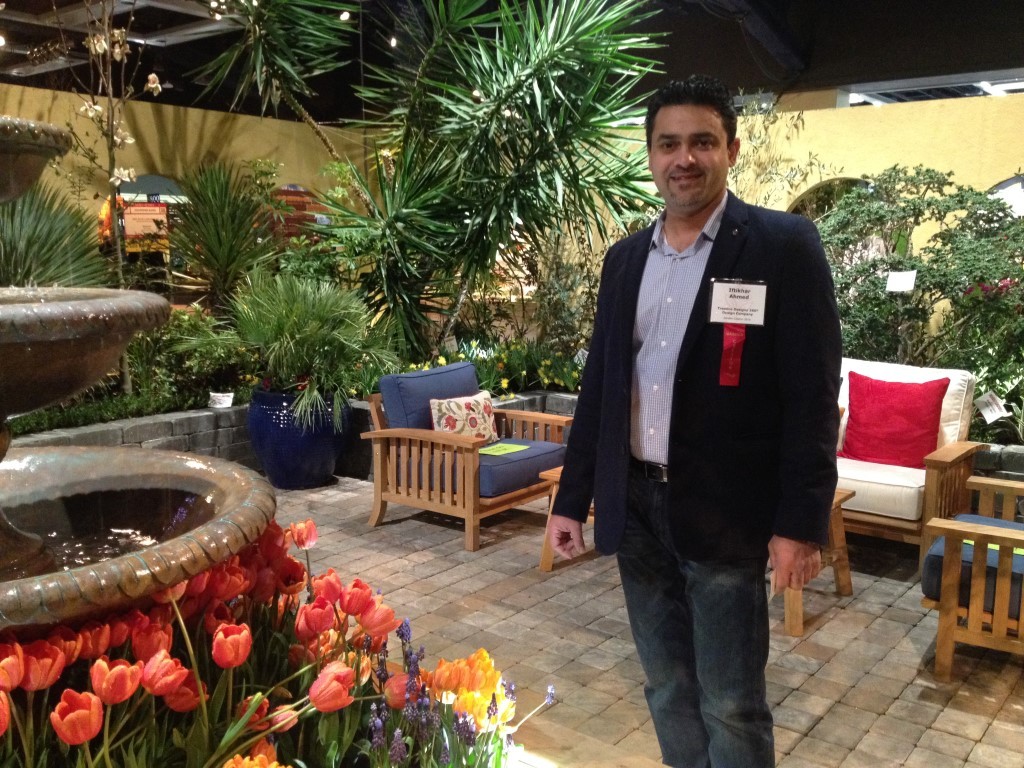If you’re a gardener like me, who read The Secret Garden as a child, the longing for a place of enclosure was planted early. Of course, a greenhouse is one of the best ways to satisfy our desire for an indoor/outdoor life-among-the-plants kind of space. Another is a courtyard.
I was reminded of this recently at the Seattle Northwest Flower and Garden Show. I was drawn to the showcase garden, El  Patio Fuente. Created by Iftikhar Ahmed of Treelinez 360° Design Company, four enclosing eight-foot tall stucco walls were broken by a series of arched windows where show goers peeked in and plants tumbled out. An open wrought iron gate invited visitors to enter. Inside, a three-tiered fountain created water music. Around the walls, raised beds held a fine mix of plants. I talked with Iftikhar about his goal for this design.
Patio Fuente. Created by Iftikhar Ahmed of Treelinez 360° Design Company, four enclosing eight-foot tall stucco walls were broken by a series of arched windows where show goers peeked in and plants tumbled out. An open wrought iron gate invited visitors to enter. Inside, a three-tiered fountain created water music. Around the walls, raised beds held a fine mix of plants. I talked with Iftikhar about his goal for this design.
“I wanted to educate people about the advantages of a courtyard,” he said. He certainly succeeded. The display garden received a gold medal from the judges and the enthusiasm of countless visitors. The enclosure appealed to all the senses—from the sharp aroma of herbs released when passersby brushed against them, to the sound of lightly splashing water that overrode the show’s clamor outside the walls. The raised beds were accessible to gardeners with a wide range of abilities. Small children viewed the plants at their level. People in wheelchairs remarked on the inclusive design.
Courtyards can be any size, from grand to tiny. Suitable for urban living, the wind is blocked; walls and stone underlayment capture heat—perfect for warm-season plants. Plus it adds protection on the coldest days. And the plants’ scents are magnified when held within walls. Even in large country gardens, if you set aside an area for a courtyard with raised beds like this one,  you’d be able to garden in better soil than your natural landscape might provide.
you’d be able to garden in better soil than your natural landscape might provide.
And the name, Fuente? “It means source,” said Iftikhar, “like a natural spring or a fountain.” Historically, a courtyard, he explained, was part of the irrigation system. Water would be piped in by gravity to the courtyard, then divided four ways, and subdivided again and again extending out into a series of water pathways. Those small canals would bring moisture for growing crops as well as ornamentals. After all, Iftikhar noted, “Water is the source of life.” And what better way to capture it than in your own secret courtyard garden?


